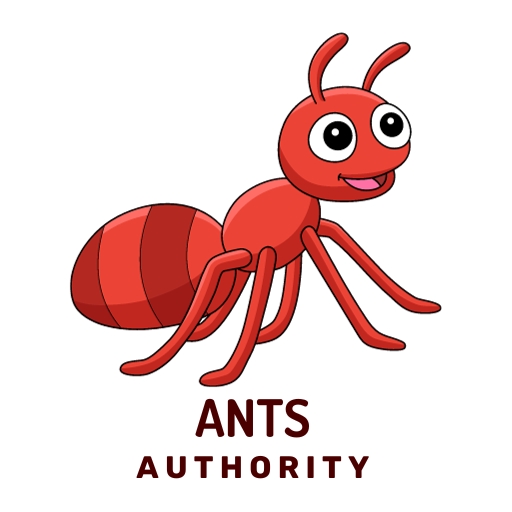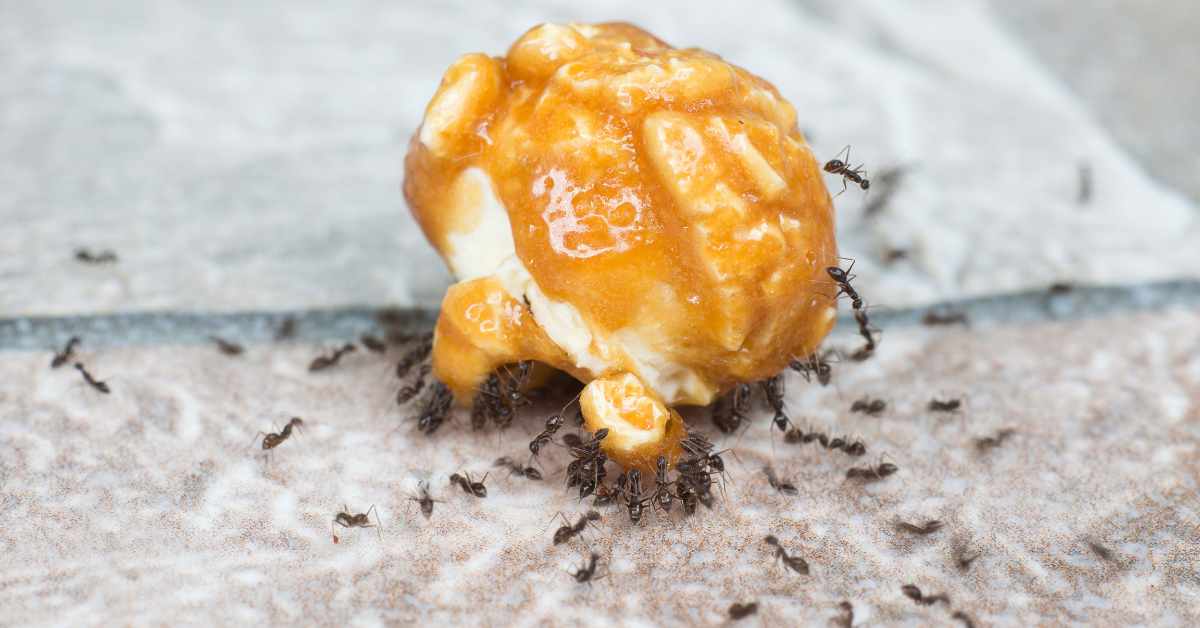It is challenging for ants to locate a food source, collect the particles, and make them suitable for eating by re-sizing them so they can be consumed quickly.
How Do Ants Break Down Food? Ants can break down food with mandibles for easier carrying of particles, easier consumption, remove seed shells, fit it within chambers, easier shifting, and better digestion. They have to break fruit chunks, seeds, nuts, or dead insects before consumption.
Ants have teeth on their broad mandibles used for multiple tasks, which can help bite predators or prey and cause injuries. For example, they can dig soil or carry objects by holding with mandibles.
How do ants break down solid food?
Ants do not have hands to grasp sharp instruments that can be used to break bigger food particles. They use body organs to grasp and cut larger particles to reduce their size.
Moreover, they have two large mandibles in their mouth that have sharp edges and help cut food. These insects have triangular mandibles that are broader enough to hold more than one teeth.
Their teeth are coated with zinc molecules to improve the sharpness that is extracted from food. In addition, some species have hooked mandibles that are used for maintaining a firm grip on the object.
One of the ant species with bigger mandibles is a trap-jaw ant piercing through an object and fixes the hooked structures inside it. After that, they pull it with good force to break it apart.
In addition, they can fix an object within two mandibles and crush it with full force so that it breaks up into several small pieces. Their pointed teeth play a crucial role in crushing solid food.
Accordingly, their mouthparts have an infrabuccal cavity that filters out larger particles before it gets into the mouth; that’s why they have to reduce the size so that they can fit inside the mouth.
Why do ants break down food?
They have to break down large food particles for different reasons, as it reduces the burden of digestion on their simpler stomachs and makes hauling feasible for ants.
Carry food particles
Ants only have smaller bodies ranging to a few millimeters, meaning they cannot carry bigger particles on their tiny bodies. They can carry almost 10 to 50 times their body weight.
However, the size of a fruit or a dead insect can be a hundred times bigger than its body size, so it becomes difficult to load the particles on the back to carry them back to the nest.
Accordingly, they make an individual or collective effort to break the body of dead insects into many parts so that it becomes easy to haul the chunks into their nests.
It depends on the size of the particle, whether they have to re-size the particle individually or collectively, as a large number of insects can complete the task quickly.
Consume small pieces
These insects have smaller mouths as their overall body size is too tiny that you cannot differentiate their body parts when looking them down on the ground while walking.
It is not possible to engulf the bigger particles as their mouth or infrabuccal plate does not allow the transfer of such bigger chunks back into the stomach.
Accordingly, they have to break it down into small pieces that can be easily transferred into their mouth and slide down into the stomach.
In addition, ants can crack nuts and seeds by fixing them between the two mandibles and moving them toward each other with full force.
Remove seed shell
Seeds are not completely engulfed by tiny insects as they have to separate an eatable portion from the remaining part that needs to be discarded away from nests.
Elaiosomes are nutrient-rich parts of seed packed with proteins, fats, and other micronutrients. Ants can take seeds back to their nest, but they have to break an outer shell to eat elaiosomes.
Additionally, they can crack a seed using mandibles or pointed teeth with extra sharpness due to the coating of zinc particles on the ends.
These insects do not keep removed shells or seeds in their nests and throw them out, which can become new plants after getting enough moisture and sunlight.
Fit food within the chamber
Ants are pretty smart creatures as they store food for winter when everything is covered in frost, or it is difficult for these tiny insects to leave their nests and forage on cold days and nights.
Moreover, they can look for seeds, dead insects, and nuts that can be stored for many months to get used in unfavorable weather conditions for survival.
Accordingly, these benefit from summer when there are plenty of options for them to eat and store within the nest, but they have to break particles down to shift them within narrow chambers.
These creatures make narrow underground tunnels with several distinct chambers to store the particles, but their size needs to be reduced to fit inside the chamber, so they have to crush it.
Easier shifting of stored food
Sometimes, ants have to shift their nests to a different location due to the depletion of food resources at a particular location, as they cannot rely on stored nutrients for long.
In addition, some predators can also force them to leave their nests and occupy new territory. So, these insects carry brood and stored food on their bodies and move into a new habitat.
It is pretty easy to move particles of smaller size when they are shifting nests as they have a lot of things to carry and move to a new location.
Small-sized particles require less effort, and even they can manage more than one chunk on their bodies or carry them by holding them with mandibles if they are smaller.
Better digestion of food
Ants have simpler stomachs that are used to digest food, produce energy and boost their performance, allowing them to carry out activities.
These insects offer simpler nutrients to their stomach for better digestion as they are not complex enough to deal with complex carbohydrates or bigger particles.
Most probably, you know about the leafcutter ants that build a mutualistic association with fungus to degrade the complex structure of leaves for better digestion of simpler molecules.
So, they have to break bigger particles into smaller pieces for easier and quick digestion without posing any stress on the stomach.
What type of food do ants have to break?
Ants usually come across a variety of food types while searching for a potent source of nutrition in their territory. They find plant-based items like leaves, fruits, seeds, stems, etc., to get nutrition.
It is not possible to consume the leaves and stems directly as they have to chew them down with their teeth and turn them into smaller particles or a liquid form by mixing them with water.
Moreover, these insects prefer consuming liquid secretions and converting solid particles into liquid for easier swallowing and digestion.
Some predatory species look for dead bodies of insects that can be bigger than their size, so they have to break tissues apart using broad mandibles by piercing with pointed teeth.
Furthermore, ants can chew candies, bread, cakes, chocolates, rice grains, sugar granules, hair, etc., commonly available in the kitchen and bathroom.
Related Articles:

